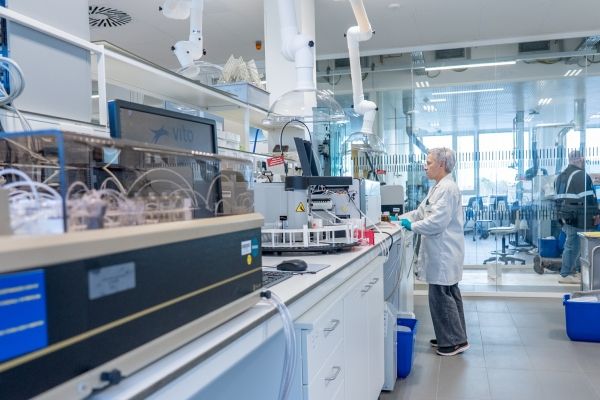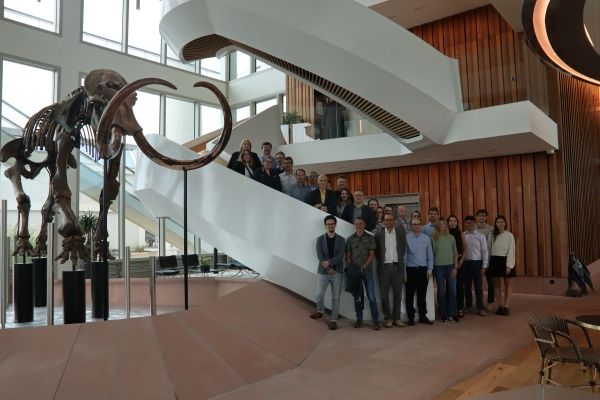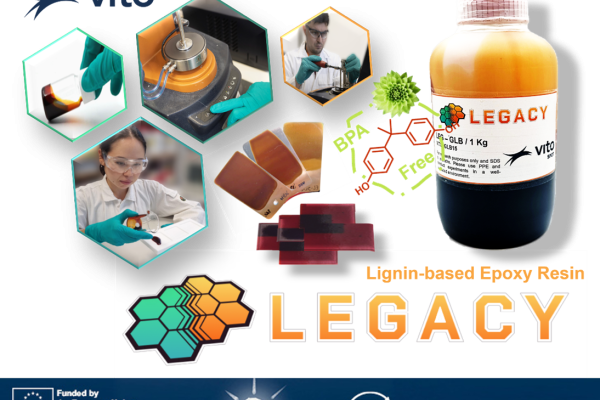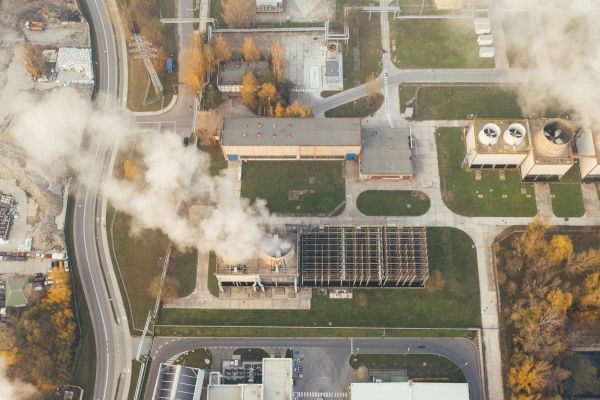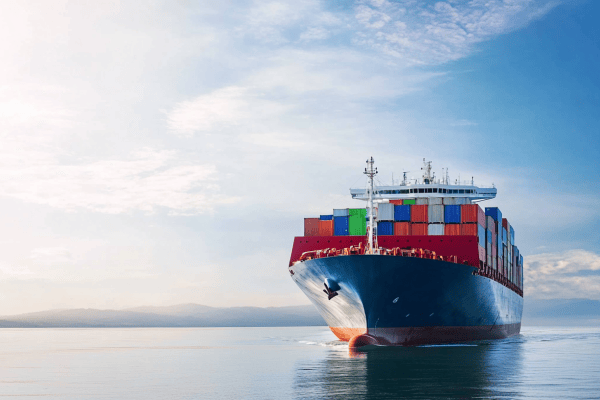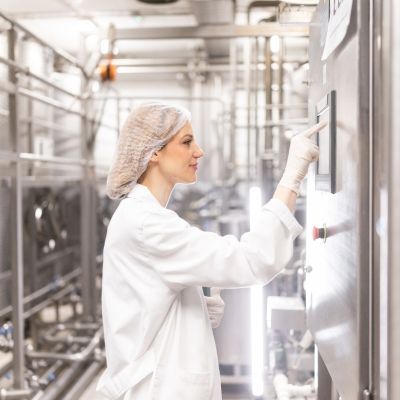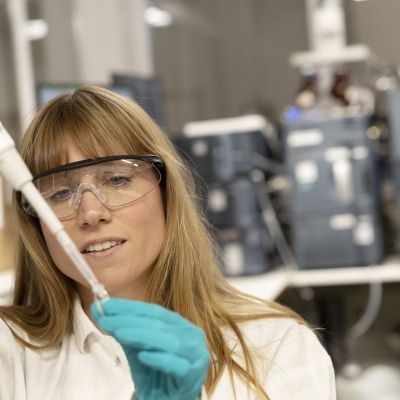Monitoring micro- and nanoplastics
Whether it concerns large pieces of plastic litter or microscopic plastic particles, there is a general consensus when it comes to plastic waste: it does not belong in nature, in our environment or in our food. The fight against plastic pollution starts with adequate monitoring. In the area of detecting and characterising micro- and nanoplastics, VITO is in the lead. ‘We are expanding the VITO lab into an international reference for the monitoring of the smallest plastic particles.’
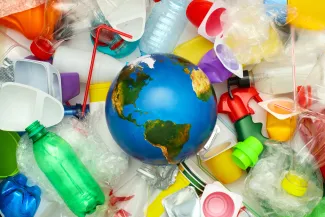
One of the analytical techniques that has known significant development is a special type of mass spectrometry called ICP-MS (inductively coupled plasma – mass spectrometry). This technique allows to measure the content of dissolved chemical elements (particles) in liquid samples down to very low concentrations. The leap forward in ICP-MS applications came thanks to faster readout capabilities and better processing of big data. ‘As a result this technique is now able to detect one signal per hundred microseconds, or one ten-thousandth of a second,’ explains Kristof Tirez from VITO. ‘So it’s good for a thousand particle identifications per minute, and that’s exactly what you need to detect all the small particles in liquid samples.
Growing concern for plastic particles
With single-particle ICP-MS a whole new analytical field has opened up. VITO, together with the Atomic & Mass Spectrometry group at UGent, managed to characterise the size of iron oxide nanoparticles (particles smaller than hundred nanometres or hundred millionth of a millimetre). These metallic nanoparticles were synthesized with the gas diffusion electrode crystallization process (GDEx), a VITO patented technology. Thanks to the analytical insights gained from the size determination of metallic nanoparticles, we were the first to succeed in using this technique to determine the size of plastic particles at a micrometer scale. In 2019, a first proof-of-concept paper was published that received a lot of media attention since there is a growing concern from society for plastic particles.
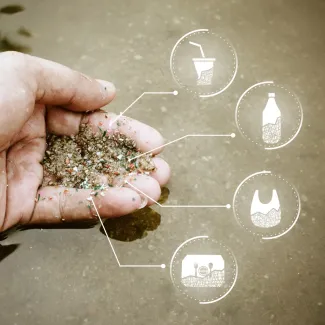
‘Plastic waste is increasingly being found where it shouldn’t be,’ explains Milica Velimirovic from VITO. There is a general consensus that we need to tackle plastic pollution in nature, in our living environment and also in the food chain. A good example of this is the ban on plastic microbeads in personal care products. But not much is currently known about the environmental and health risks of plastics, especially of smaller plastic particles such as micro- and nanoplastics.’ That’s because research is still in its infancy, as mentioned in a World Health Organization (WHO) report in 2022. The report underlines the need for reliable methods to characterise and quantify the health risks linked to micro- and nanoplastics. But first of all, adequate monitoring of plastic particles in the environment is required. The WHO highlights the need for standardized analytical methods. ‘And that’s where the VITO lab, as the Flemish reference laboratory for environmental analysis, plays an important role.
Plastic particles are already being monitored today, but it’s limited to particles larger than 10 micrometres. ‘We focus on particles with sizes below that threshold,’ explains Velimirovic. ‘In particular, plastic particles in the low-micrometre region (< 10 µm) and nanoplastics (< 1 µm).’ The chemical analytica made its way to VITO via a prestigious Marie Curie research grant. Since 2022, VITO has built-out a new analytical platform for the detection and characterisation of nanoparticles. The VITO lab can rely on a unique, comprehensive and complementary set of tools for separating and detecting these small particles.
There are countless pollution sources of micro- and nanoplastics. They can be released from plastic waste (e.g. litter) that breaks down under the influence of UV radiation from the sun, from textiles when they are washed, from paints when they react with the environment, etc. Moreover, smaller plastic particles occur in much higher numbers in the environment than larger particles. This was also highlighted in the WHO report. Indeed, analyses of drinking water samples have shown that the concentration of particles a few micrometres in size is several orders of magnitude higher than of plastic particles a few hundred micrometres in size. ‘And it can be expected that this trend will continue as we move further down to the nano level, to even smaller particles,’ warns Tirez.
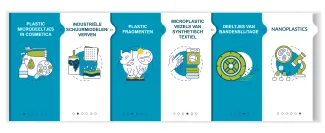
Size matters
Scientists also fear that with smaller particles, there are more health risks. Velimirovic: ‘For certain metallic nanoparticles, it is already known that they have a bigger effect.’ Smaller particles can penetrate our bodies more easily. When we inhale them, the smallest particles will penetrate most deeply, possibly even into the bloodstream. So size matters. This is definitely the case when it comes to the environmental and health effects of plastic particles. But also the route of exposure plays an important role. VITO is also investigating this aspect in specific research projects. In the EU project ‘MS4Plastics’ analytical methods are developed to detect plastic particles in fish and seafood. In the ‘CE4Plastics’ project, the focus is on detecting nanoplastics released from plastic bottles.
With growing public concern about plastic pollution, governments want to monitor the spread of smaller microplastics (particles smaller than 10 micrometers). ‘The first European and international standard methods for monitoring microplastics in water are expected in 2024,’ confirms Tirez. ‘The monitoring of nanoplastics is still in an early research and development stage. The continued collaboration with our partners of UGent is intended to gain a deeper understanding of the analytical and instrumental processes. Standardized methods for the determination of nanoplastics are only expected by the end of this decade.’
To combat plastic pollution, it must be known how plastics spread into environments and products where they do not belong in order to limit this.
Furthermore, we also need to deal with plastics differently, how we produce them and how we use them. Plastics are essential, we cannot avoid them but we need to be much more aware of the impact they can have on the environment and our health.
Sector organisations and industry are aware of this. Although they mainly focus on the current regulations, they also look at medium and long term evolutions and VITO supports them thanks to our unique infrastructure and leading edge research,’ says Marzio Monagheddu from VITO.




